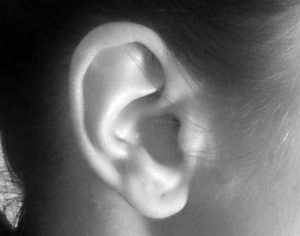This Just In – E-Cigarettes May Cause Hearing Loss
If you thought the war on e-cigarettes couldn’t get any worse, you were wrong (again, probably). As if they hadn’t been accused of causing enough health problems – without any kind of evidence – e-cigs are now under fire for potentially causing hearing loss.
 E-cig users vaping nicotine-laced e-liquids may be at risk of losing their hearing. At least that’s what the vice president of audiology for hearing aid maker Starkey Hearing Technologies wrote in an editorial posted on The Sacramento Bee. Dave Fabry says that even though electronic cigarettes produce no carbon monoxide, tar or most of the dangerous chemicals found in tobacco smoke, they can contain nicotine, which may damage hearing.
E-cig users vaping nicotine-laced e-liquids may be at risk of losing their hearing. At least that’s what the vice president of audiology for hearing aid maker Starkey Hearing Technologies wrote in an editorial posted on The Sacramento Bee. Dave Fabry says that even though electronic cigarettes produce no carbon monoxide, tar or most of the dangerous chemicals found in tobacco smoke, they can contain nicotine, which may damage hearing.
“While nicotine’s toxic effects on the ear are not fully understood, it is well established that nicotine reduces oxygen in the bloodstream and decreases blood flow,” Fabry says. “In the ear, oxygen is essential to cochlear hair cells, which convert sound waves into electrical impulses the brain can understand. Decreased blood flow and lower oxygen levels can damage those hair cells, resulting in hearing loss.”
That doesn’t sound good, but it actually gets worse. The Starkey Hearing Technologies VP went as far as to say using e-cigarettes may be worse for your hearing than smoking, because “unlike regular cigarettes, which have a fairly consistent concentration of nicotine, many electronic cigarettes rely on refillable tanks that contain liquid laced with different flavors (like bubble gum, marshmallows and gummy bears) and different nicotine levels that the user can customize.”
By his reasoning, the ability to alter the nicotine concentration in e-liquid means abuse is more likely to occur, especially in teens looking to get higher doses of the addictive substance, creating an even greater risk of hearing loss than smoking.
Yeah, I guess that makes sense, right? Not really, no, because as scientific research has shown, nicotine absorption from e-cigarettes is significantly lower than from tobacco cigarettes. Using first generation e-cigs, which most vapers know as “cigalikes” for 5 minutes, researchers got 1/3rd to 1/4th plasma nicotine levels compared to smoking 1 tobacco cigarette. “In fact, even after 1 hour of use, users could not obtain plasma nicotine levels similar to smoking 1 cigarette in 5 minutes,” Dr. Konstantinos Farsalinos notes on his website. Newer devices are more efficient in delivering nicotine, with levels being 35-72% higher than those observed in cigalikes, but still considerably lower than tobacco cigarettes.
After analyzing the data from the above-mentioned study, Dr. Farsalinos concluded that an e-liquid with a nicotine concentration of at least 50mg/ml would be needed in order for nicotine absorption from e-cigarettes to approximate that of smoking. Most e-liquid companies produce juices in concentrations of 0, 3, 6, 12, and 18mg/ml, with only a few going as high as 32mg/ml.
But I’m guessing Mr. Fabry didn’t read this particular study, or else he would have understood that ineffective nicotine delivery and absorption is the main reason e-cig users vape so often. They have to draw several times to get the same amount of nicotine smokers get in a single cigarette puff.
He did however mention a study from June last year that he claims confirms damage to adolescents’ inner ear linked to electronic cigarette use. He didn’t link to it however, and though I’m not saying it doesn’t exist, I wasn’t able to find it online.
The only other evidence – if you can even call it that – linking vaping to hearing loss is a story we reported on last year. Musician Rob Swire took to Twitter to blame vaping for his temporary hearing loss. He, however, said that the real culprit was the propylene glycol in the e-liquid, not the nicotine.
Dave Fabry admits that further studies are needed to confirm the effect of nicotine-containing e-cigarette on hearing, but seems very eager to point out that “teens who are lured into using e-cigarettes thinking they’re not as dangerous as tobacco, need to understand that they’re trading the devil they know for the devil they don’t.”
So, better to choose the devil you know, right, Mr. Fabry? That’s actually in line with the attitude of most regulators and e-cigarette opponents. After all, we just don’t know if e-cigarettes are safe or not, right? So before we’re sure – which may be never – let’s just maintain the status quo. That’s much safer…
Photo: Wikimedia Commons
















